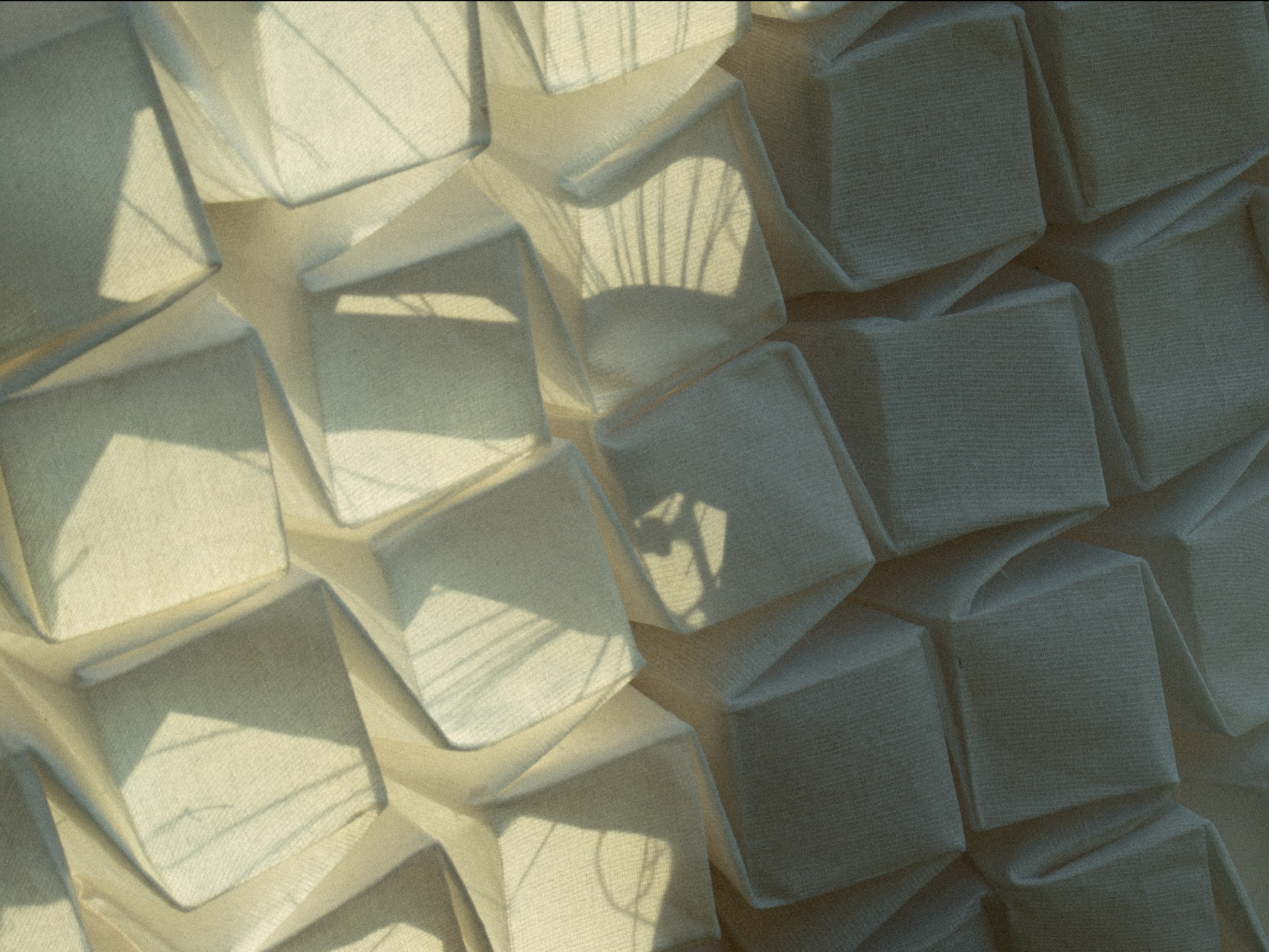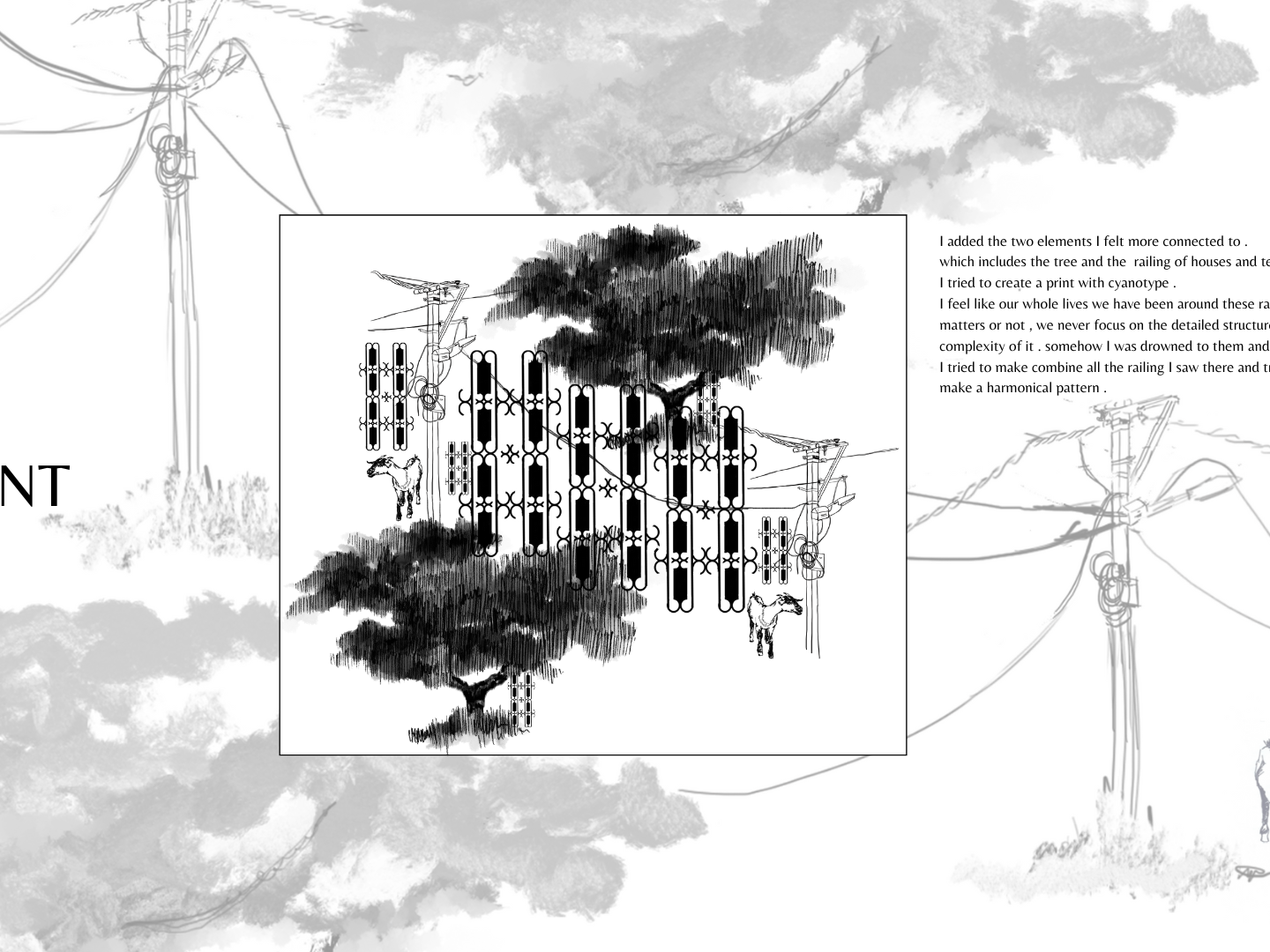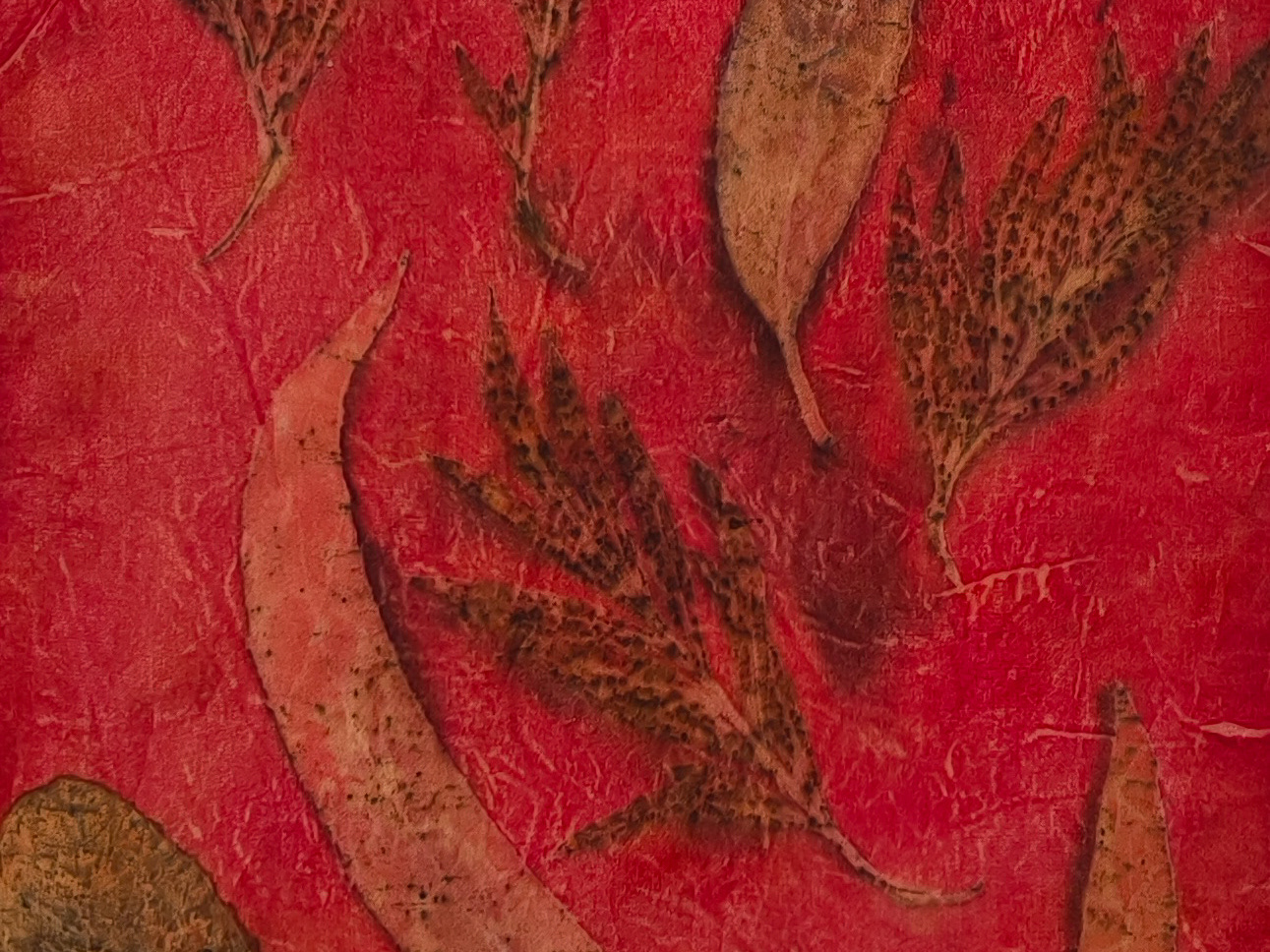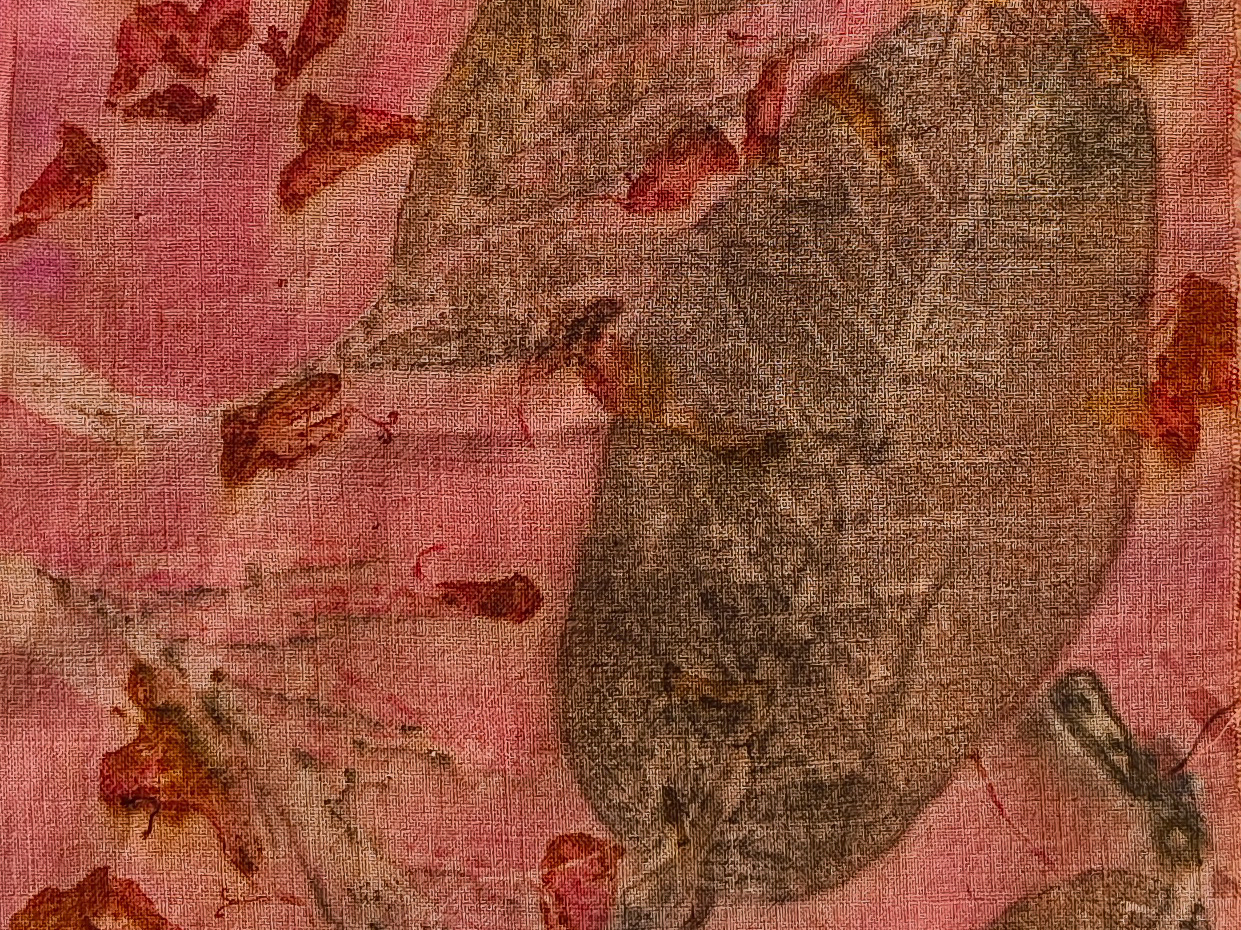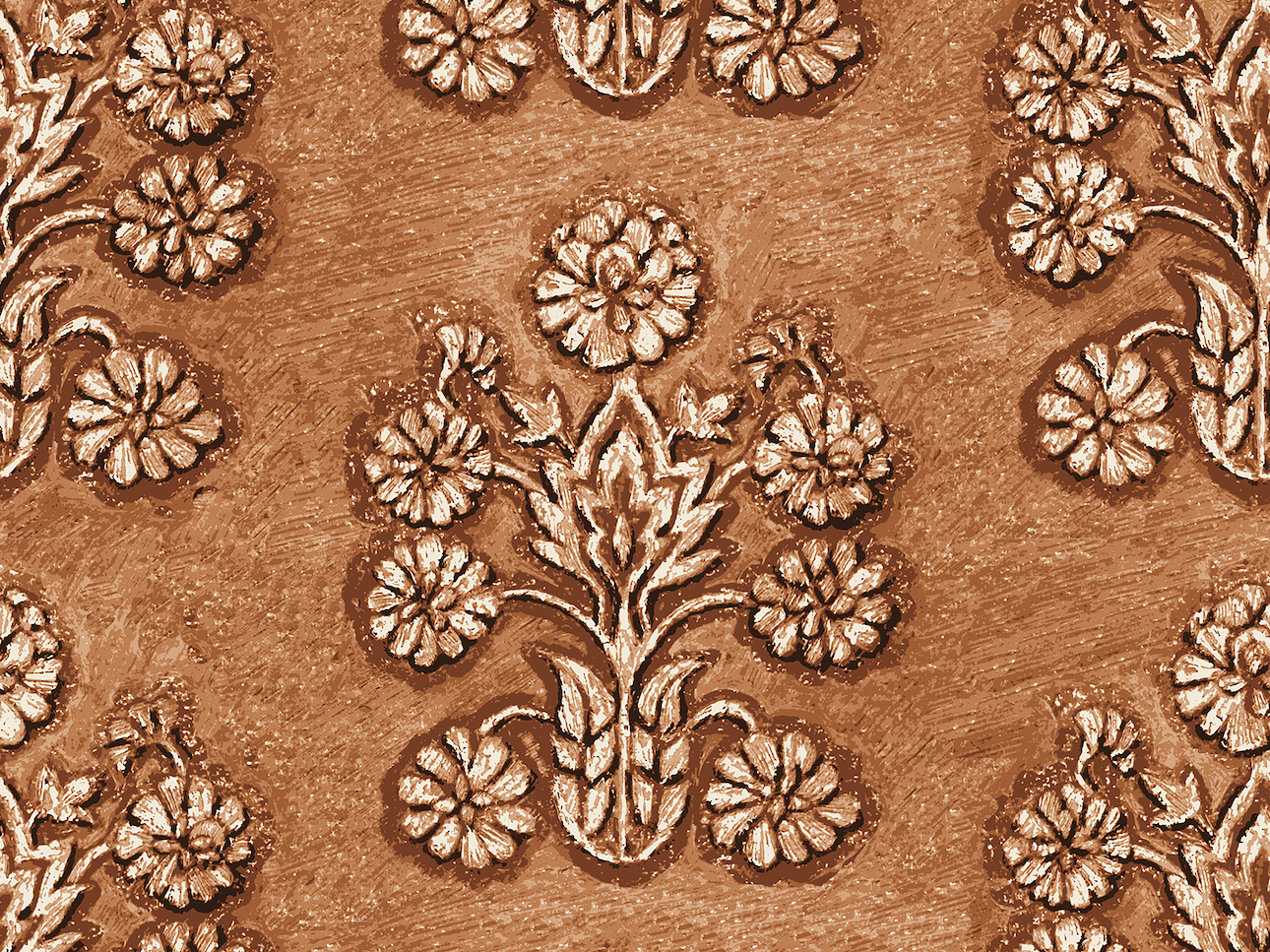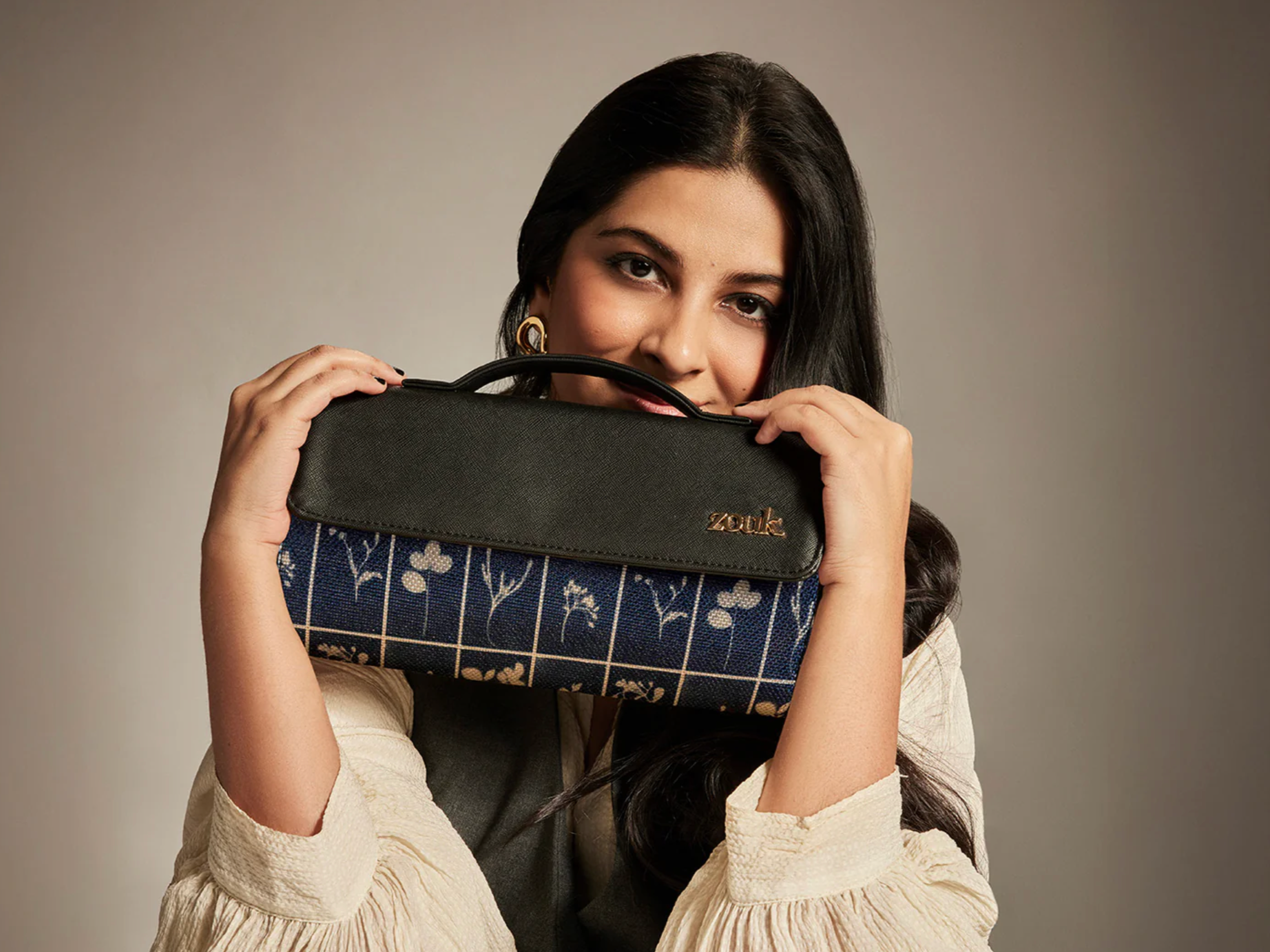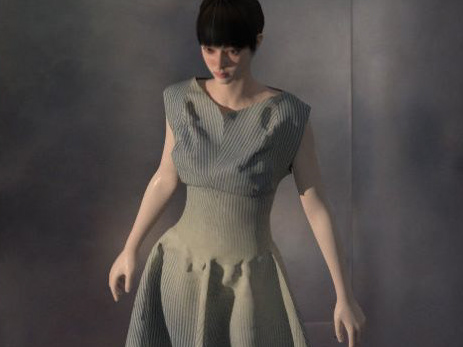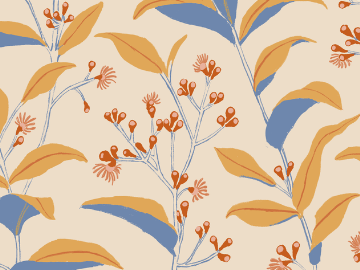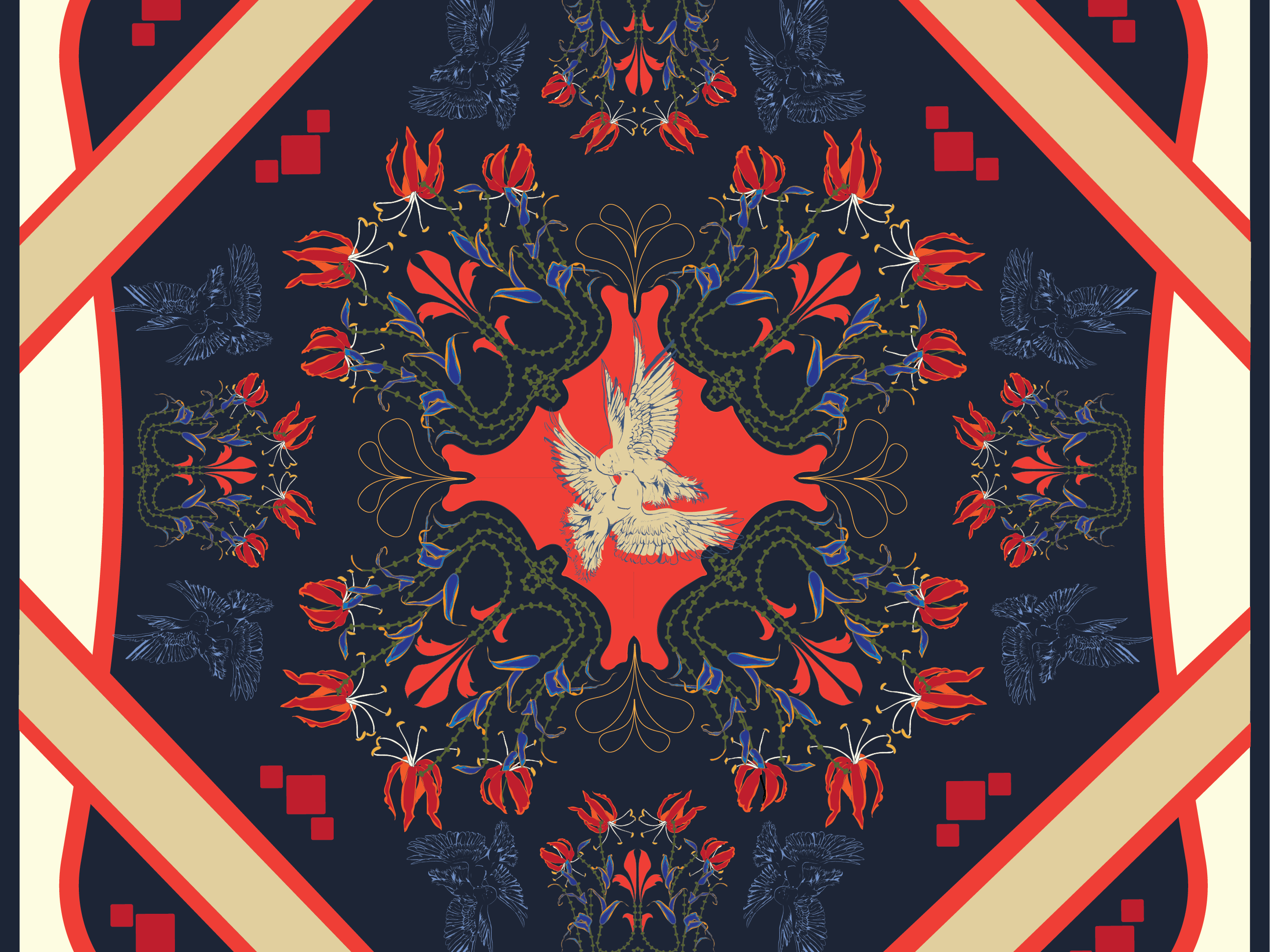Photographic printing is a traditional process of creating images by exposing light-sensitive materials to light through a negative and developing them using chemical or natural baths. The development process reveals and stabilizes the image, producing a physical print with rich tones and details.
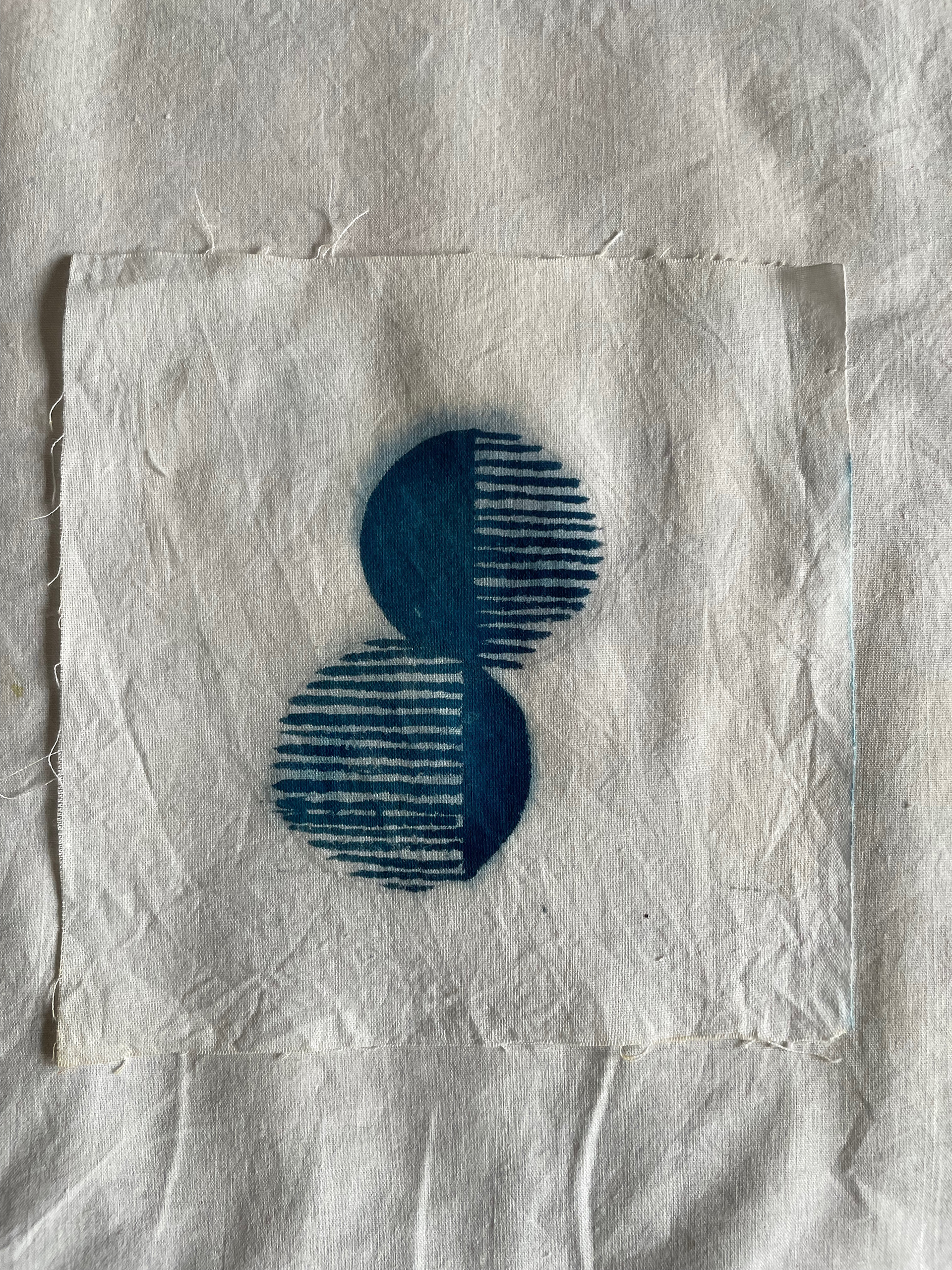
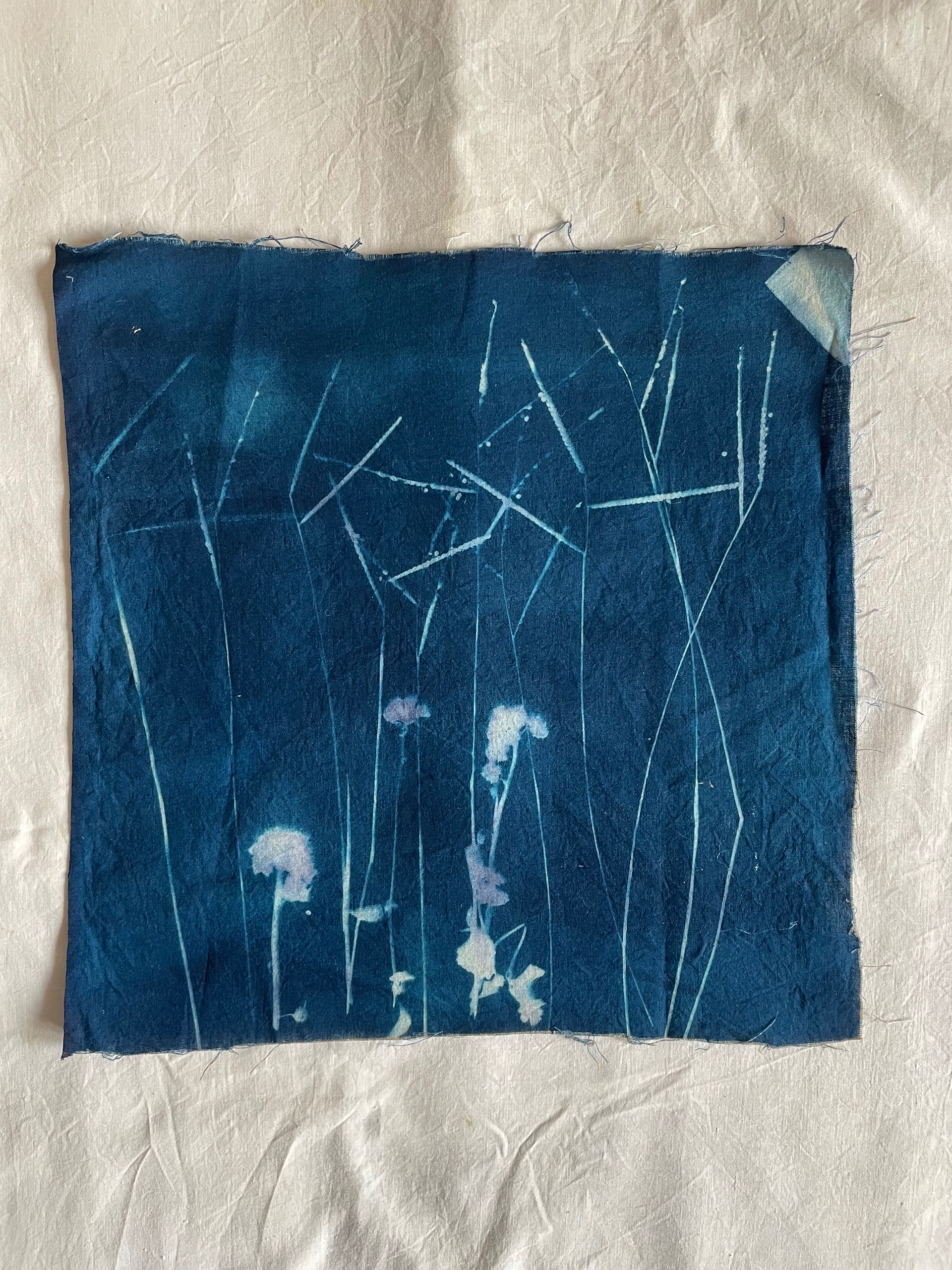
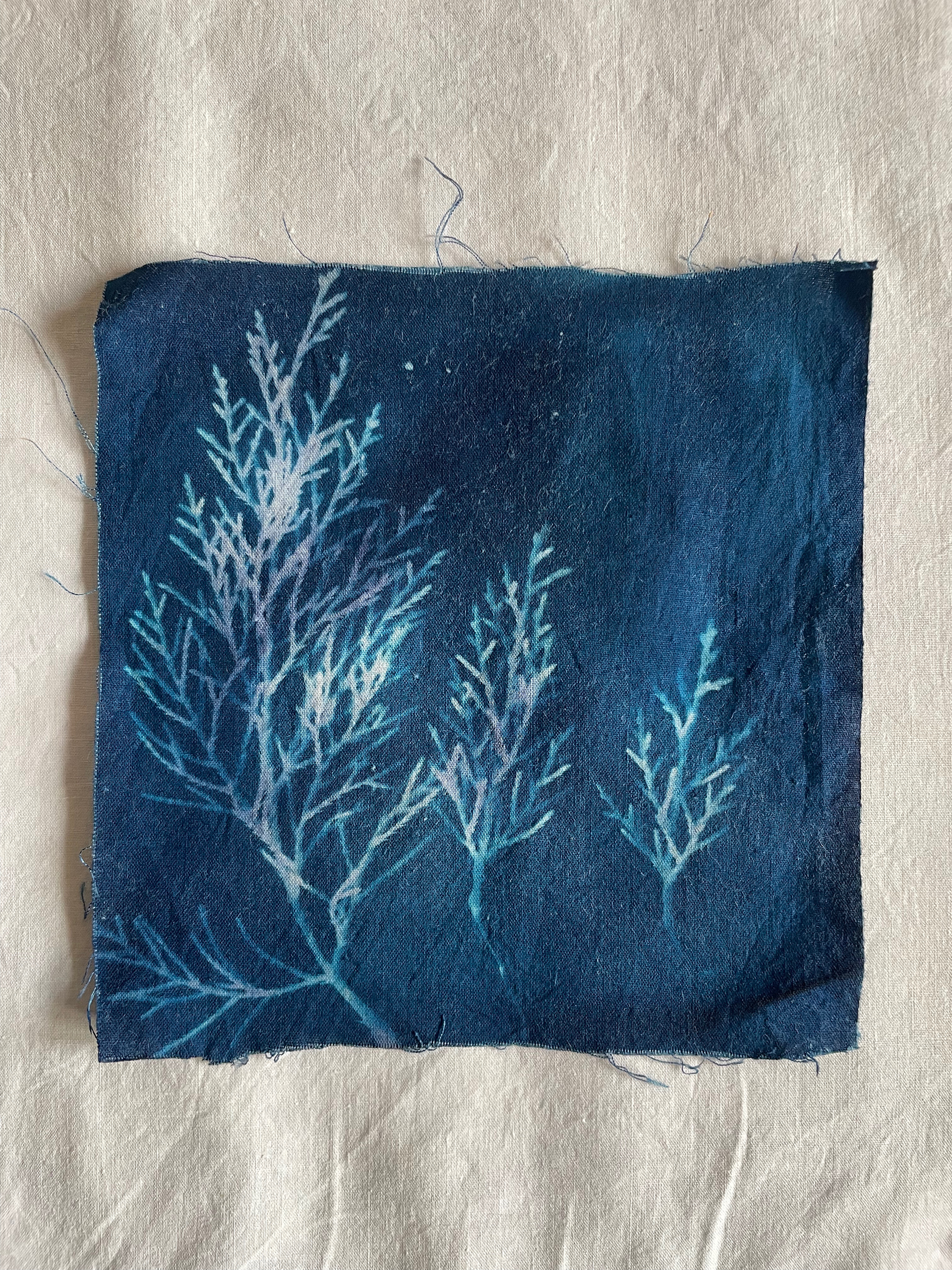
In this process, bio-materials like leaves and twigs were used for cyanotype photoprinting. The objects were placed on light-sensitive paper, exposed to sunlight, and then rinsed in water. The exposed areas turned blue, while the covered areas remained white, creating detailed impressions of the natural materials.
In this process, a negative photo was used to create a positive print using the cyanotype technique. The negative was placed on canvas, which absorbed the chemical better than fabric, resulting in a more prominent effect.
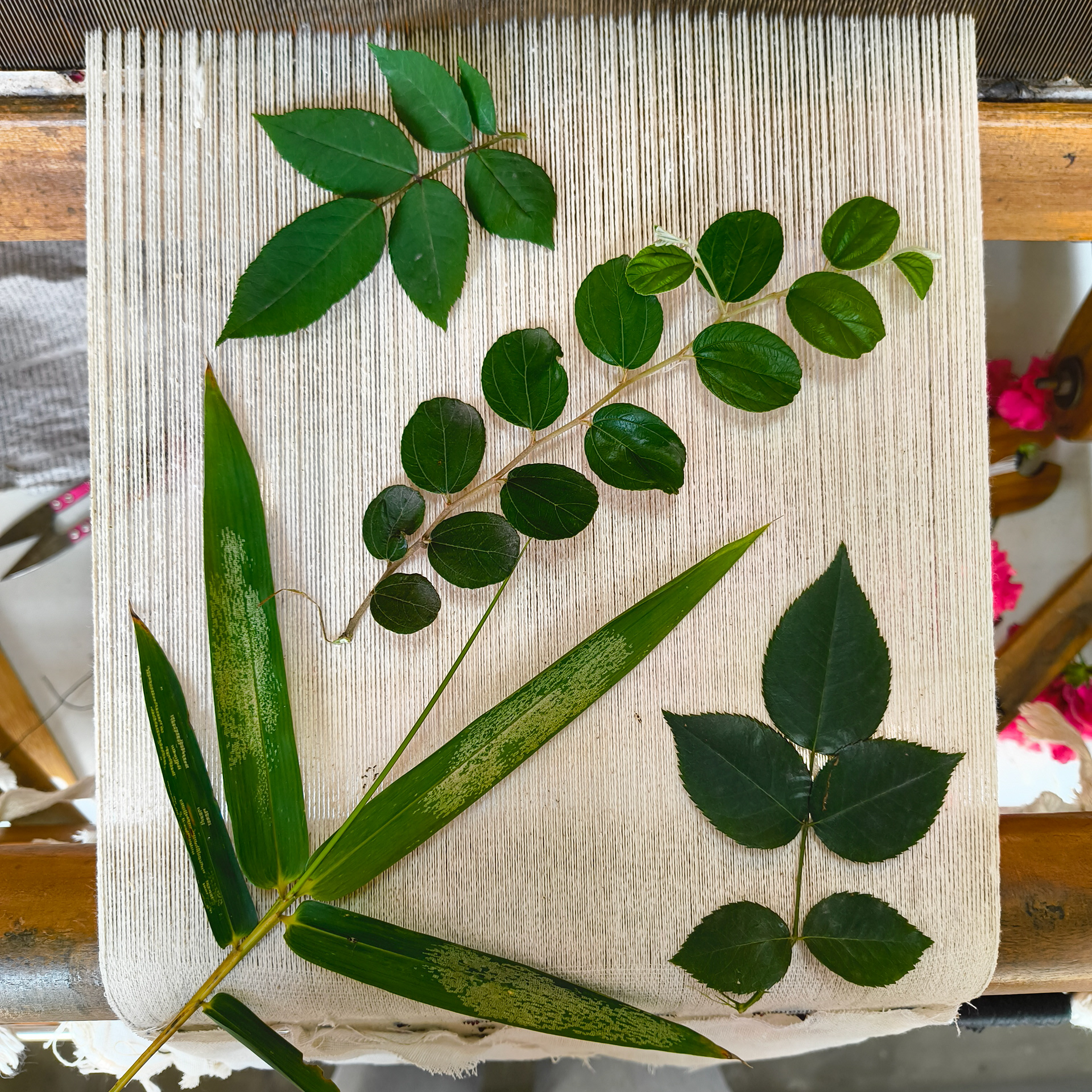
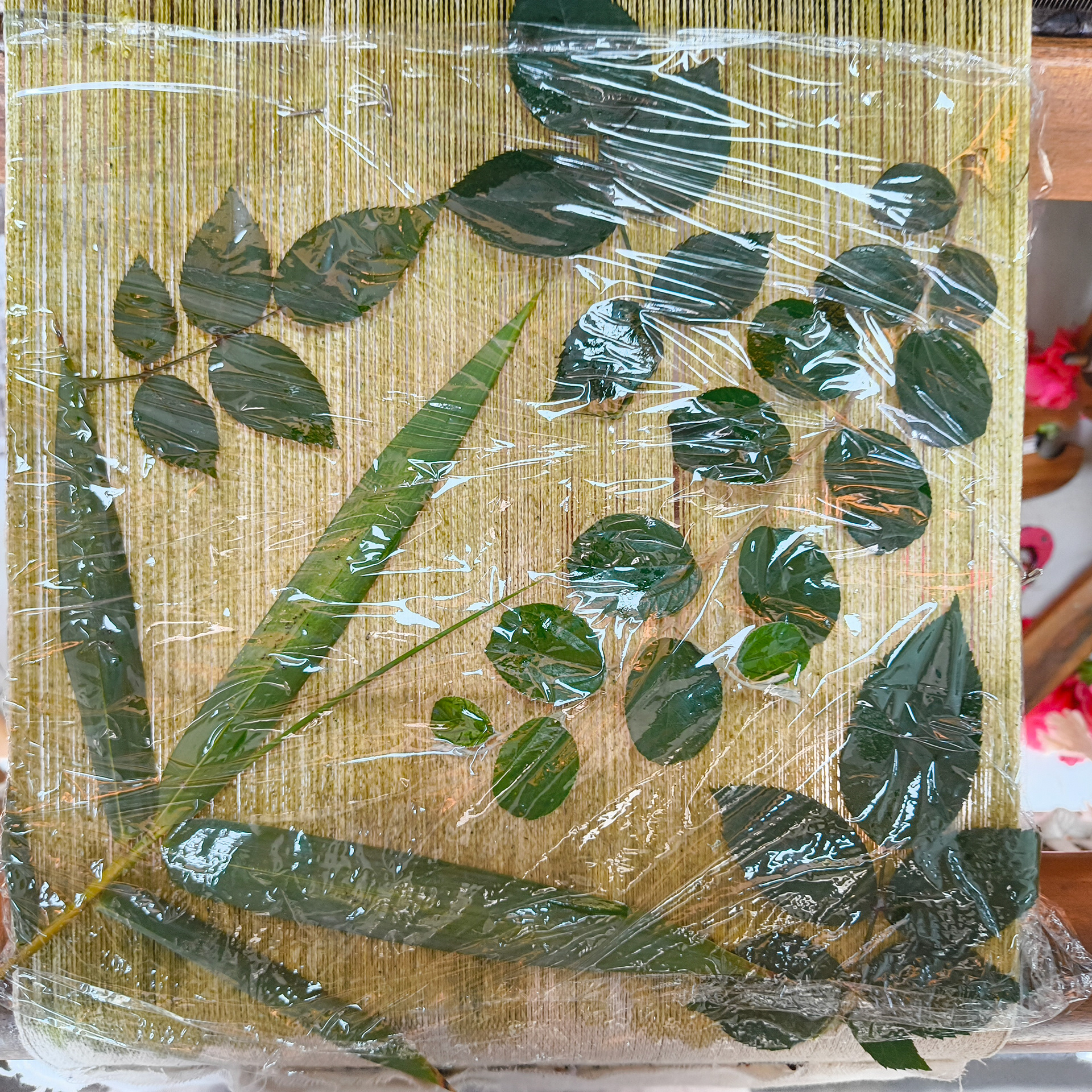
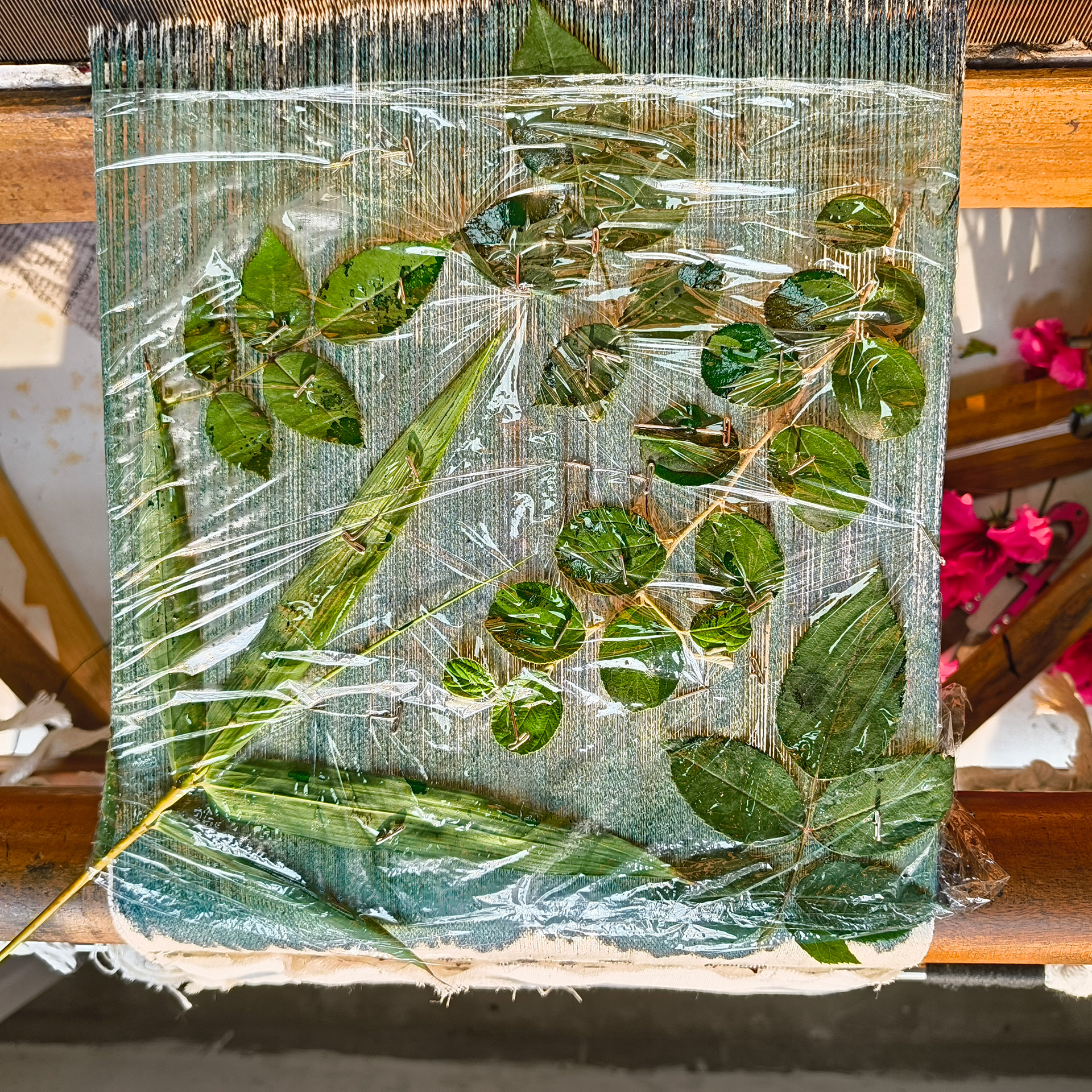
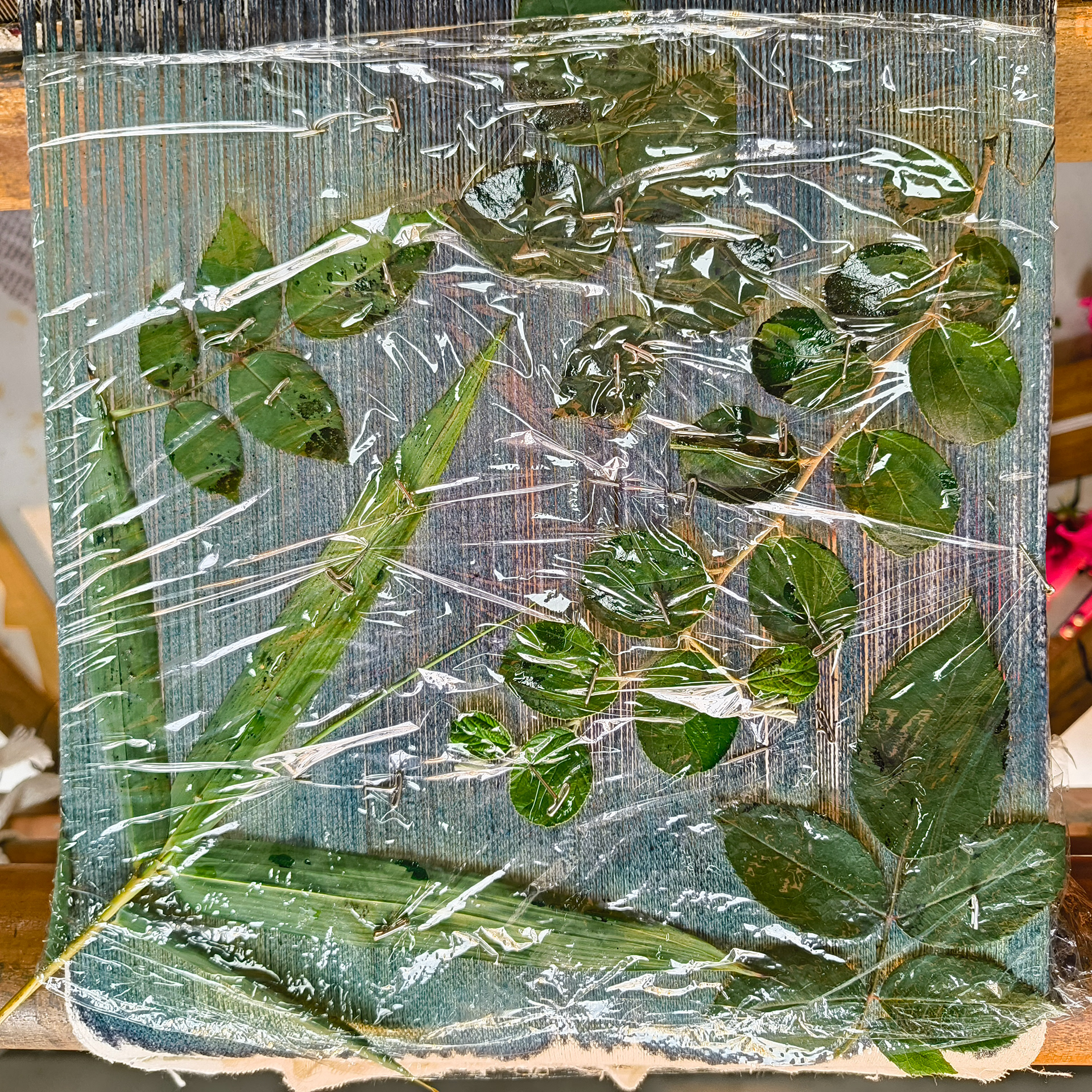
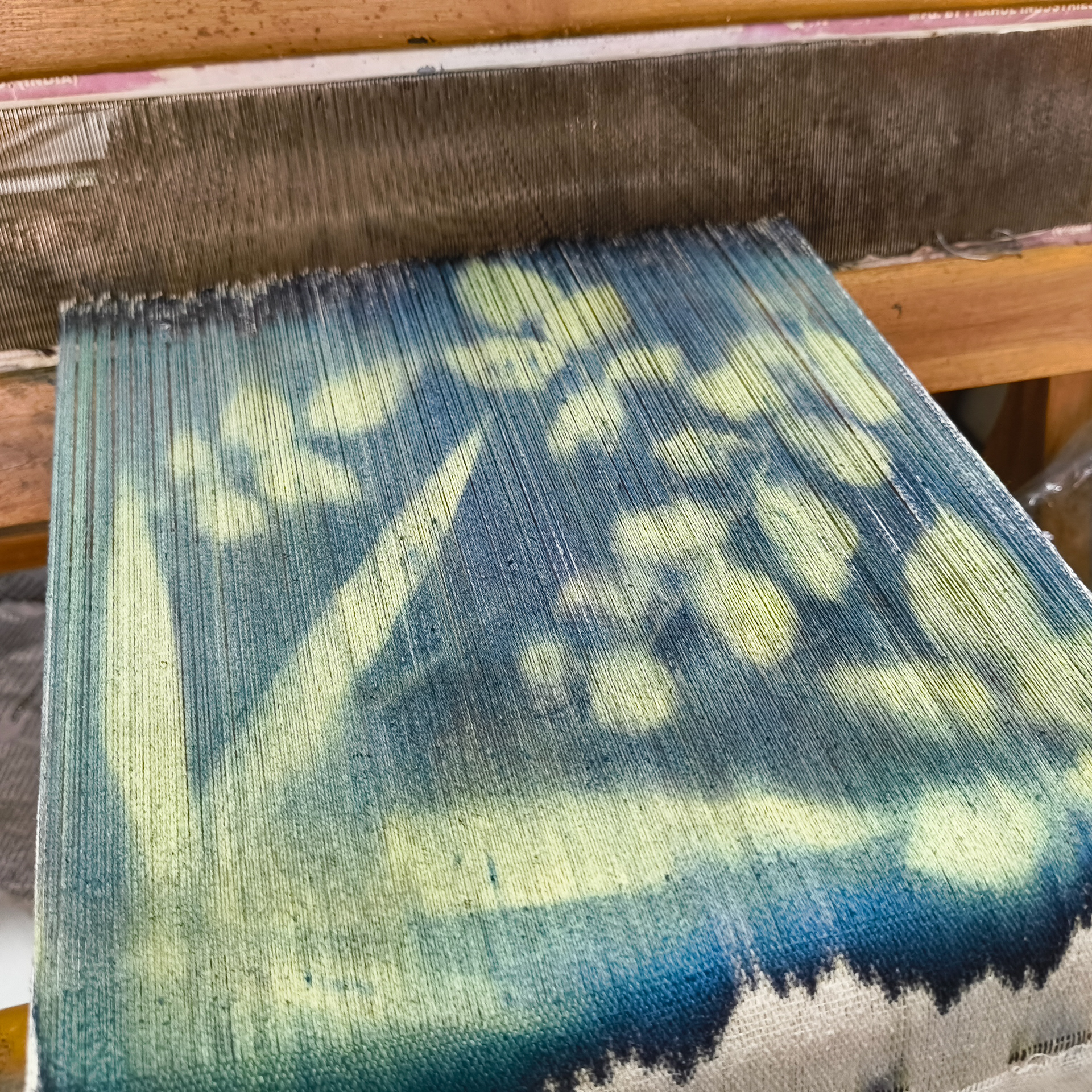
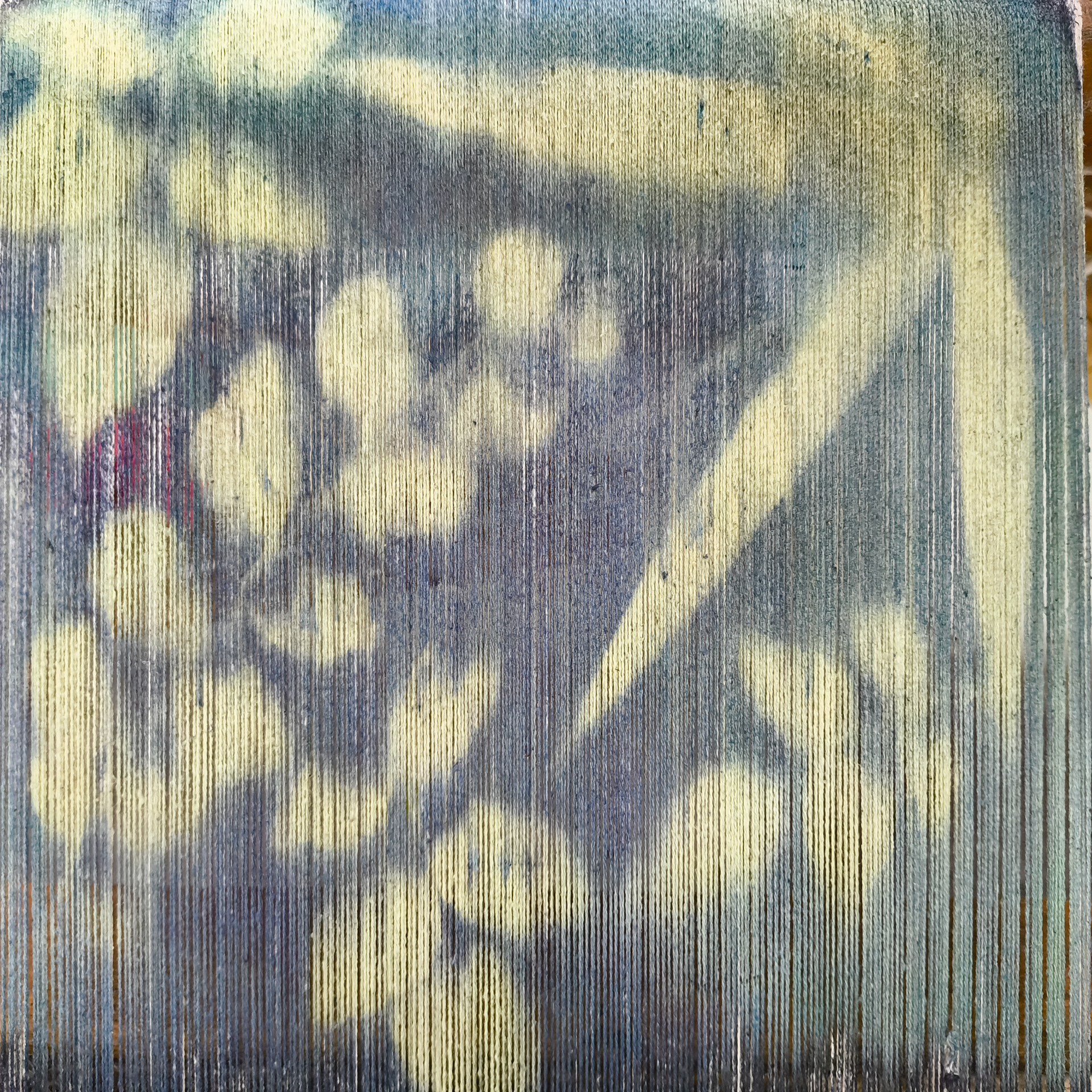
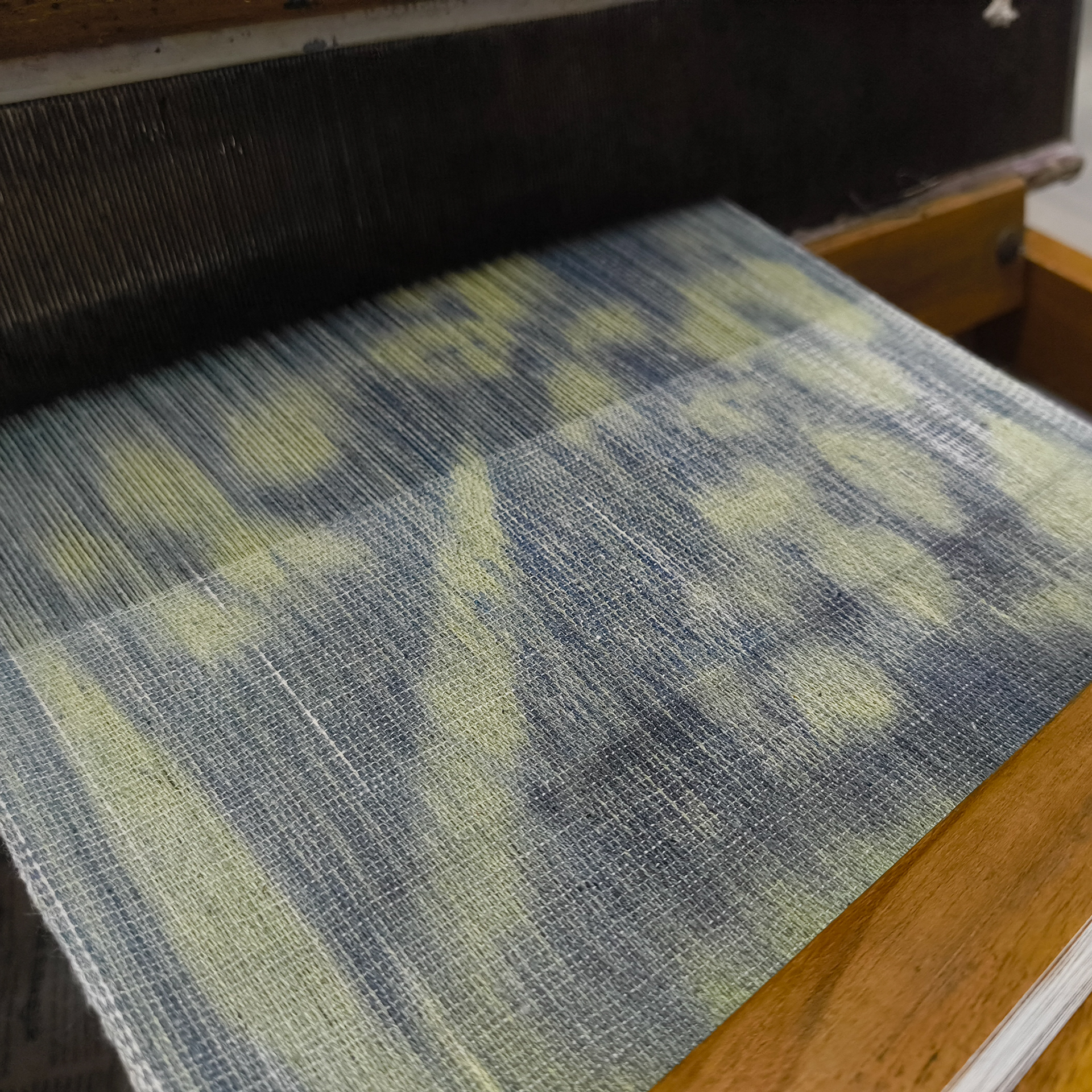
I experimented with printing cyanotype directly onto woven fabric during the weaving process to observe how the interplay of techniques influences the final look and texture.
Anthotype
Anthotype is a natural photographic process that uses plant-based pigments to create light-sensitive prints. Pigments from flowers, plants, or spices are applied to paper, which is then exposed to sunlight with a negative or object on top. UV light fades the pigment, forming an image with soft, organic tones.
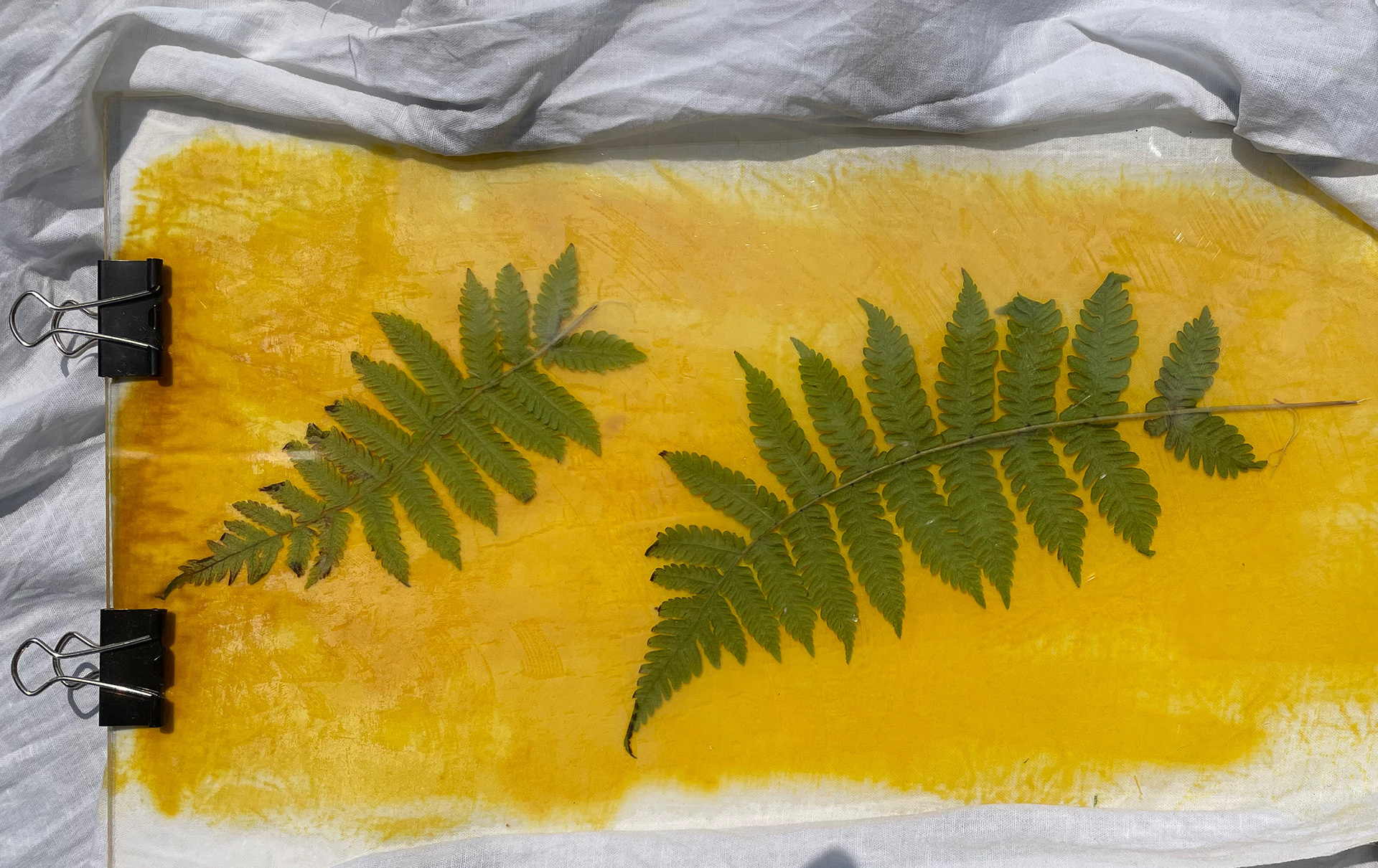
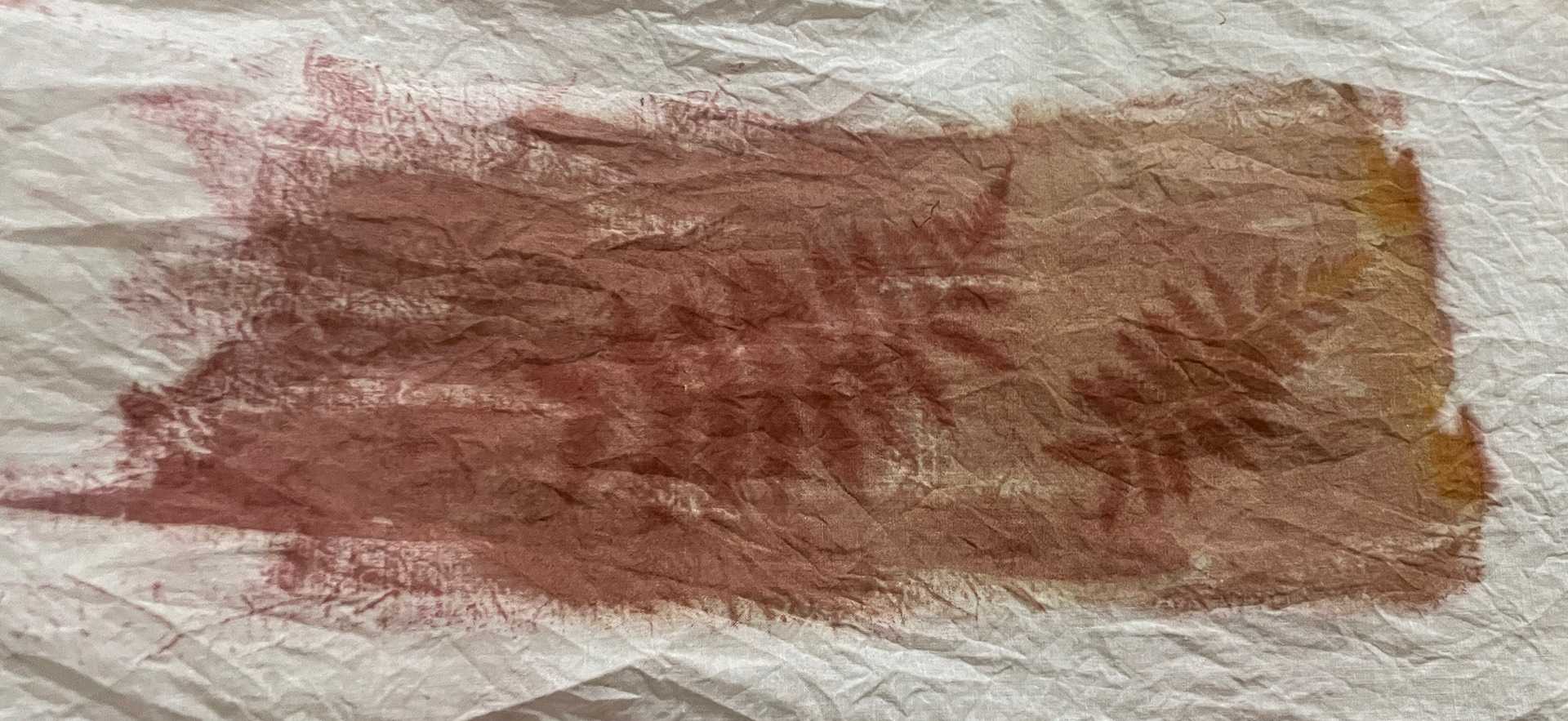
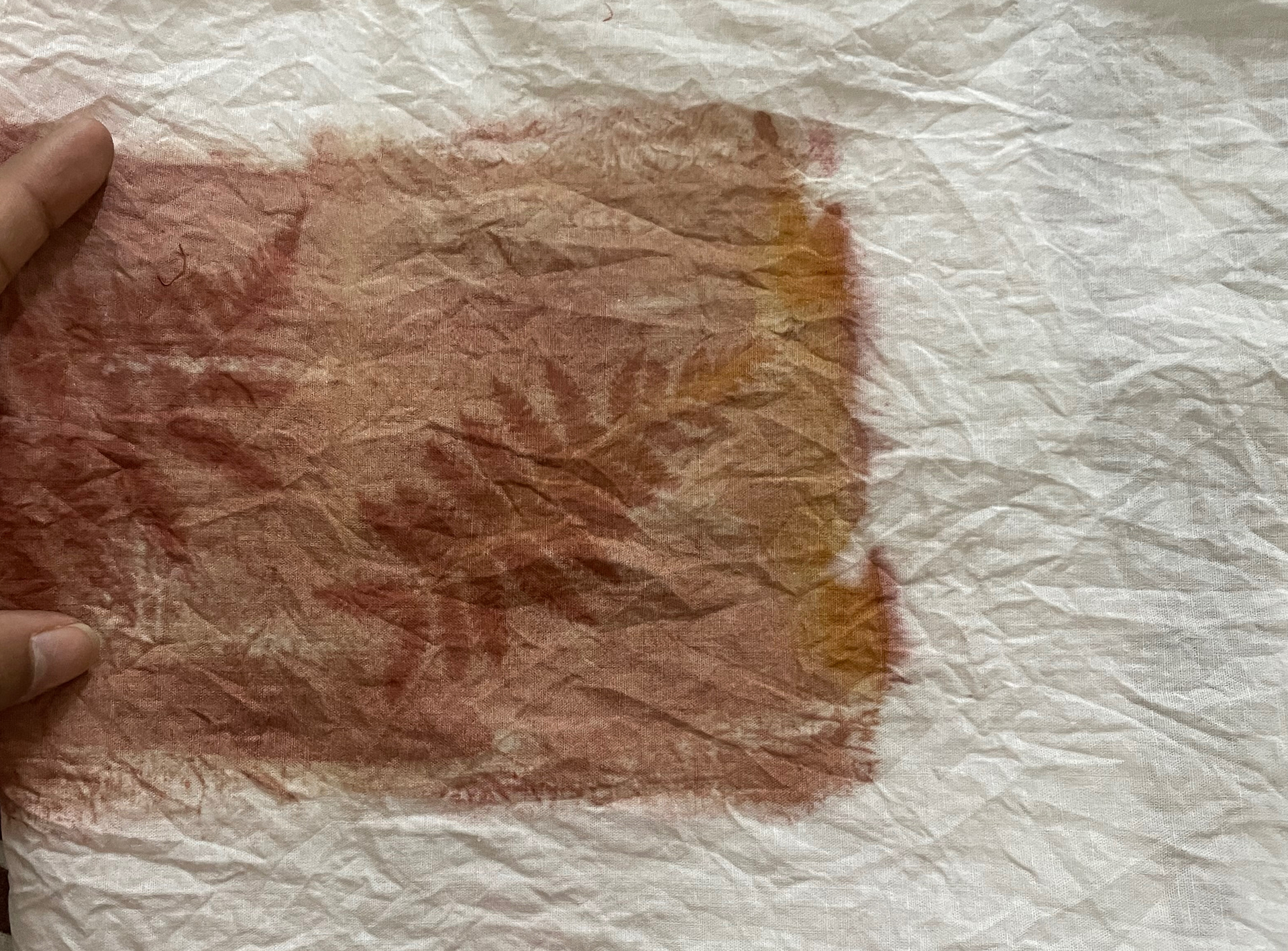
Turmeric Anthotype Printing.
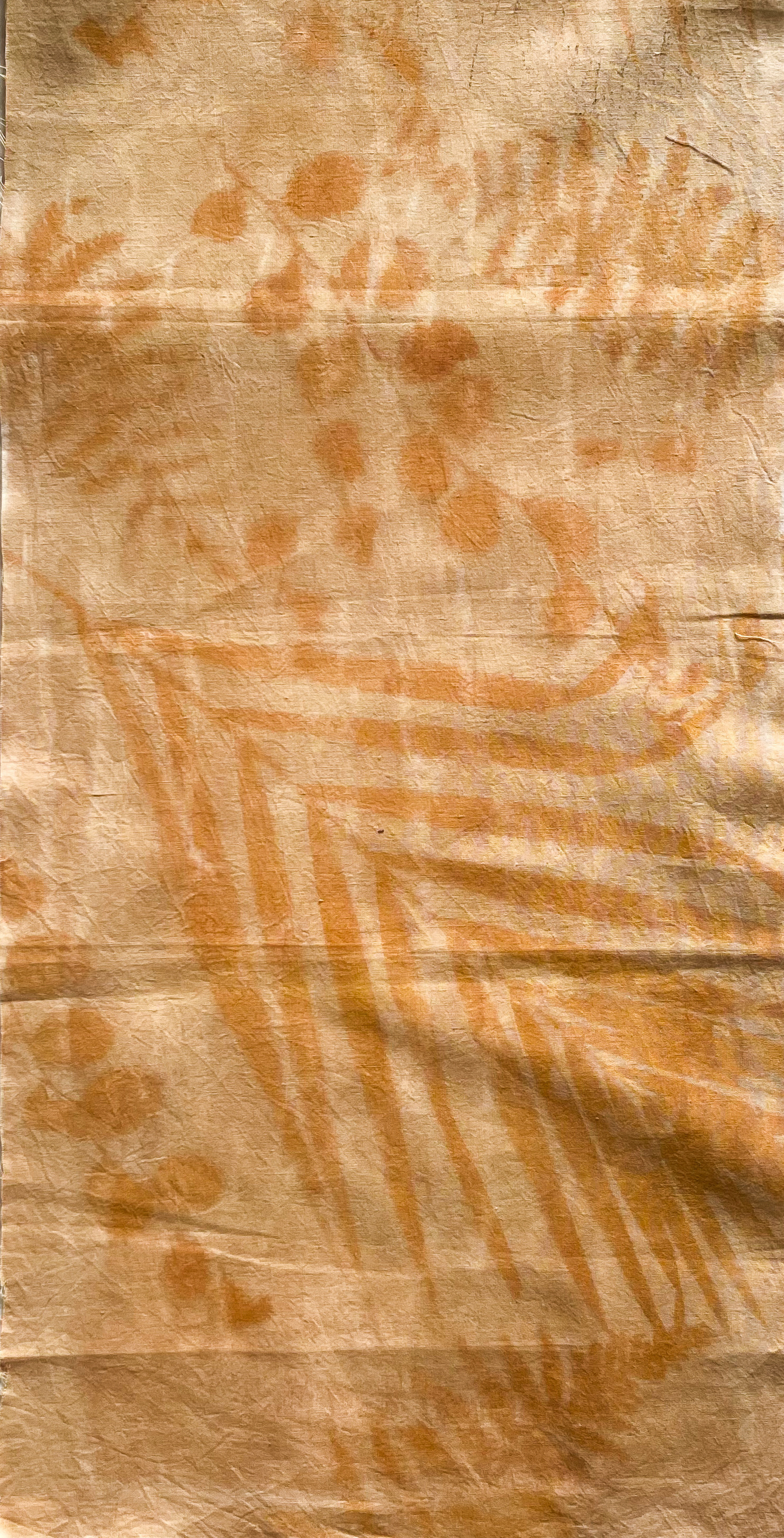
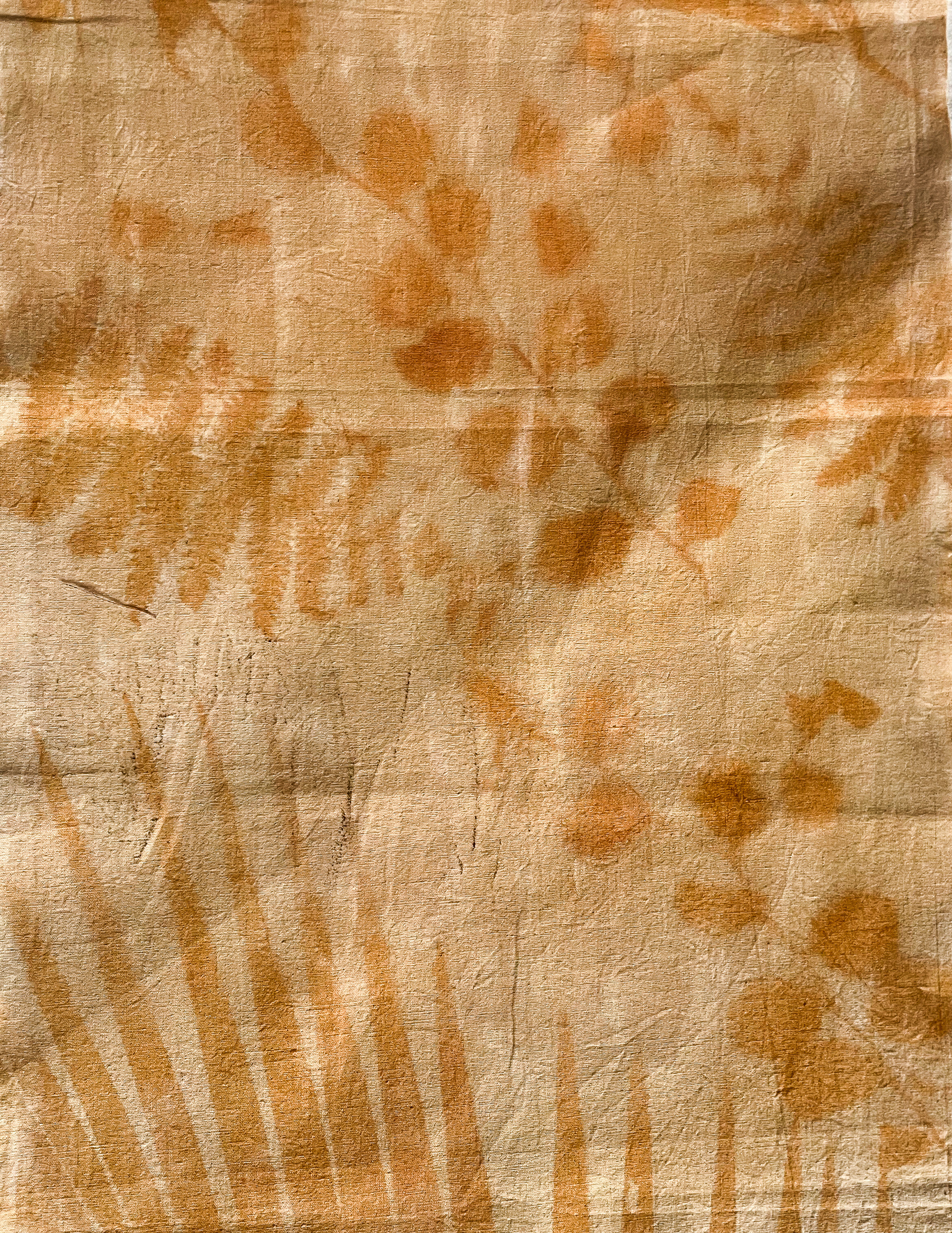
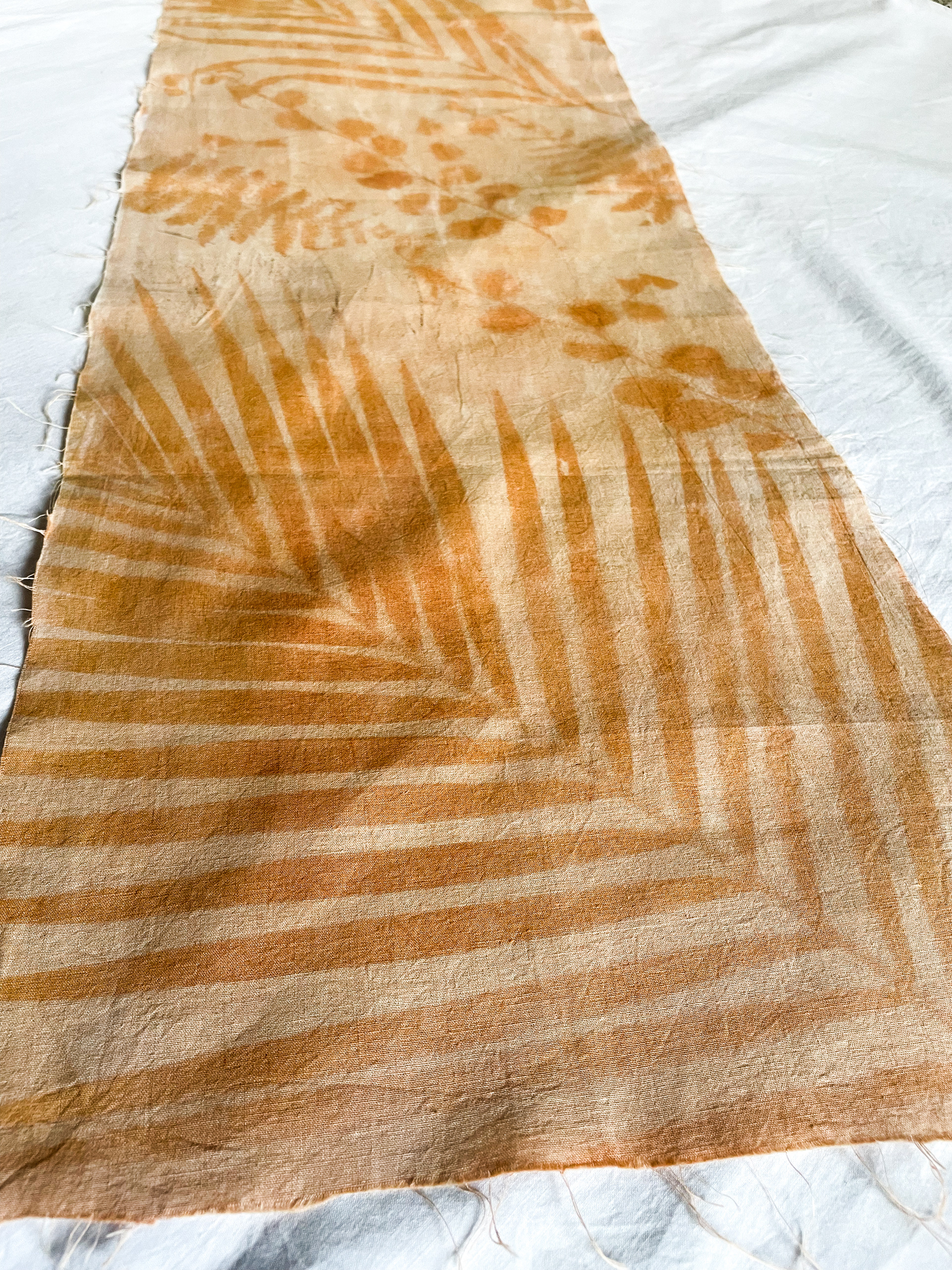
Beetroot Anthotype Printing.
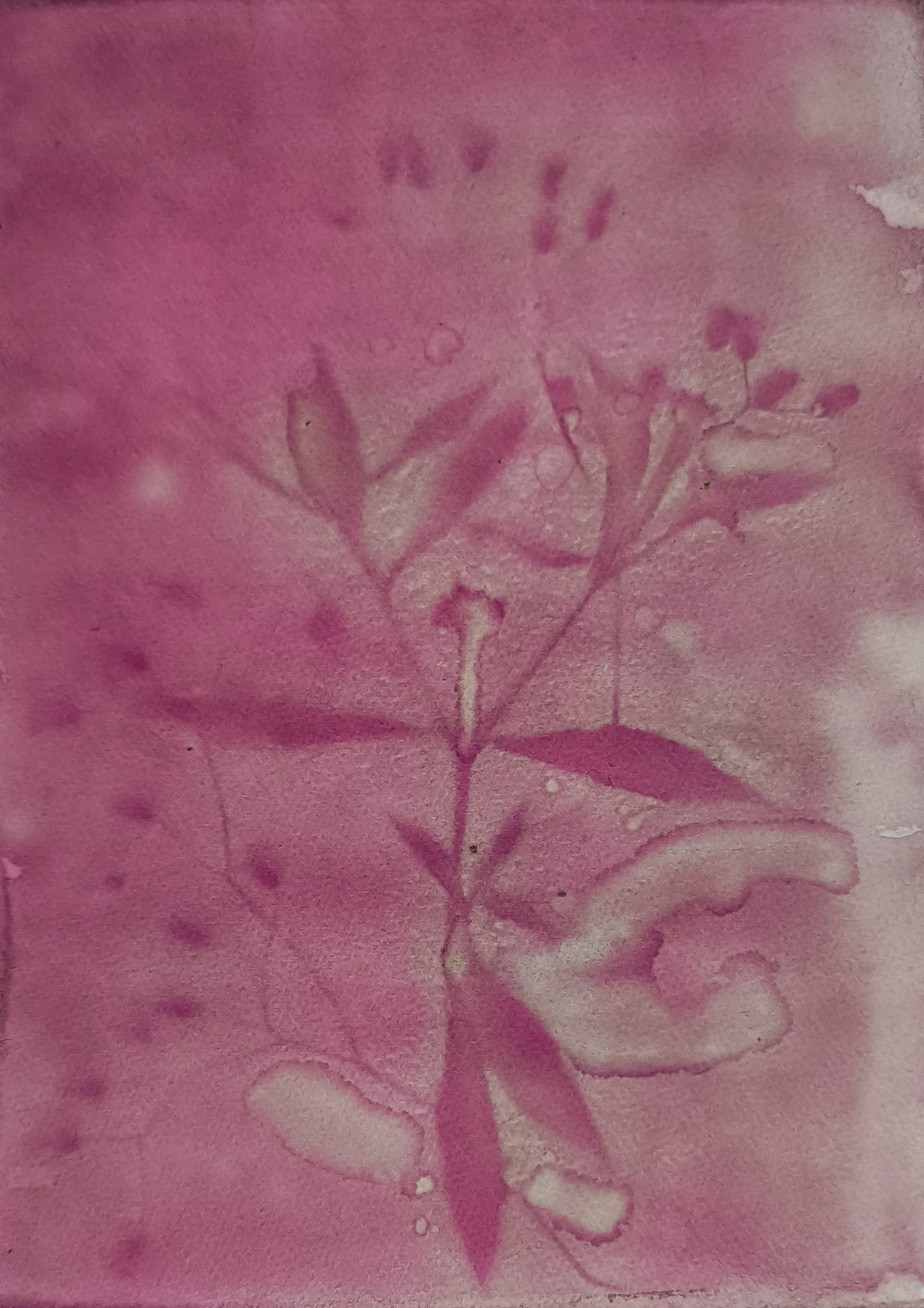
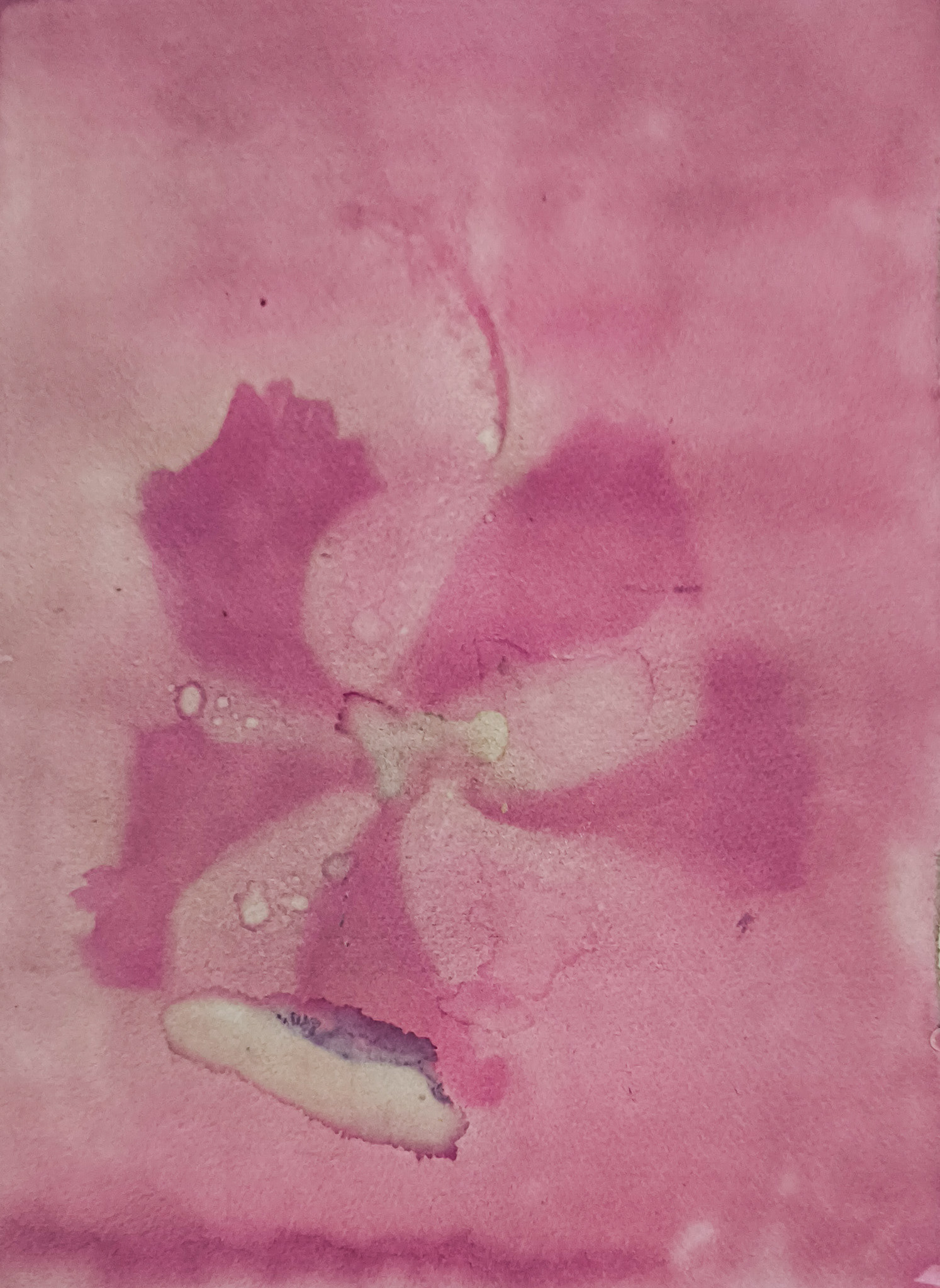
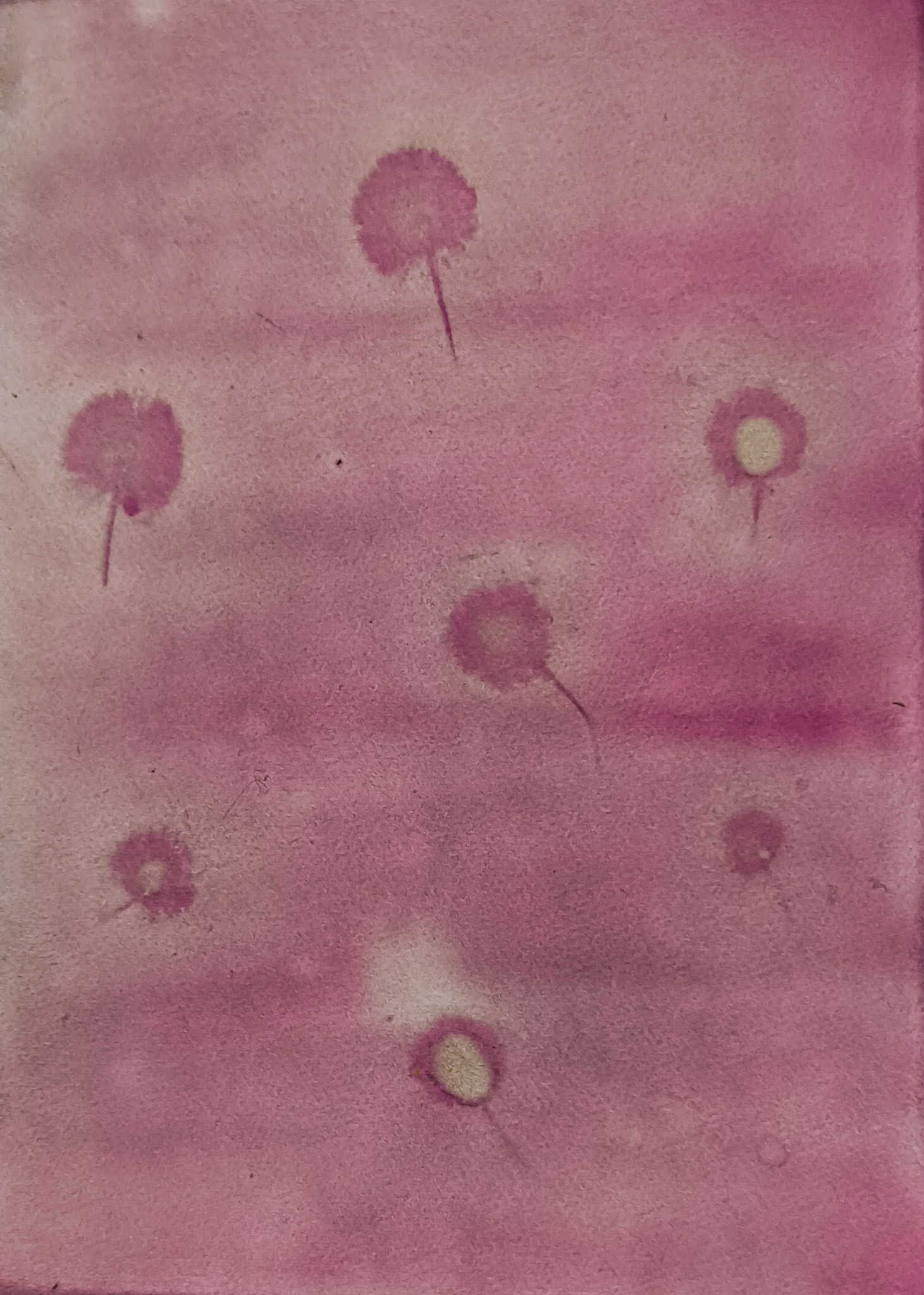
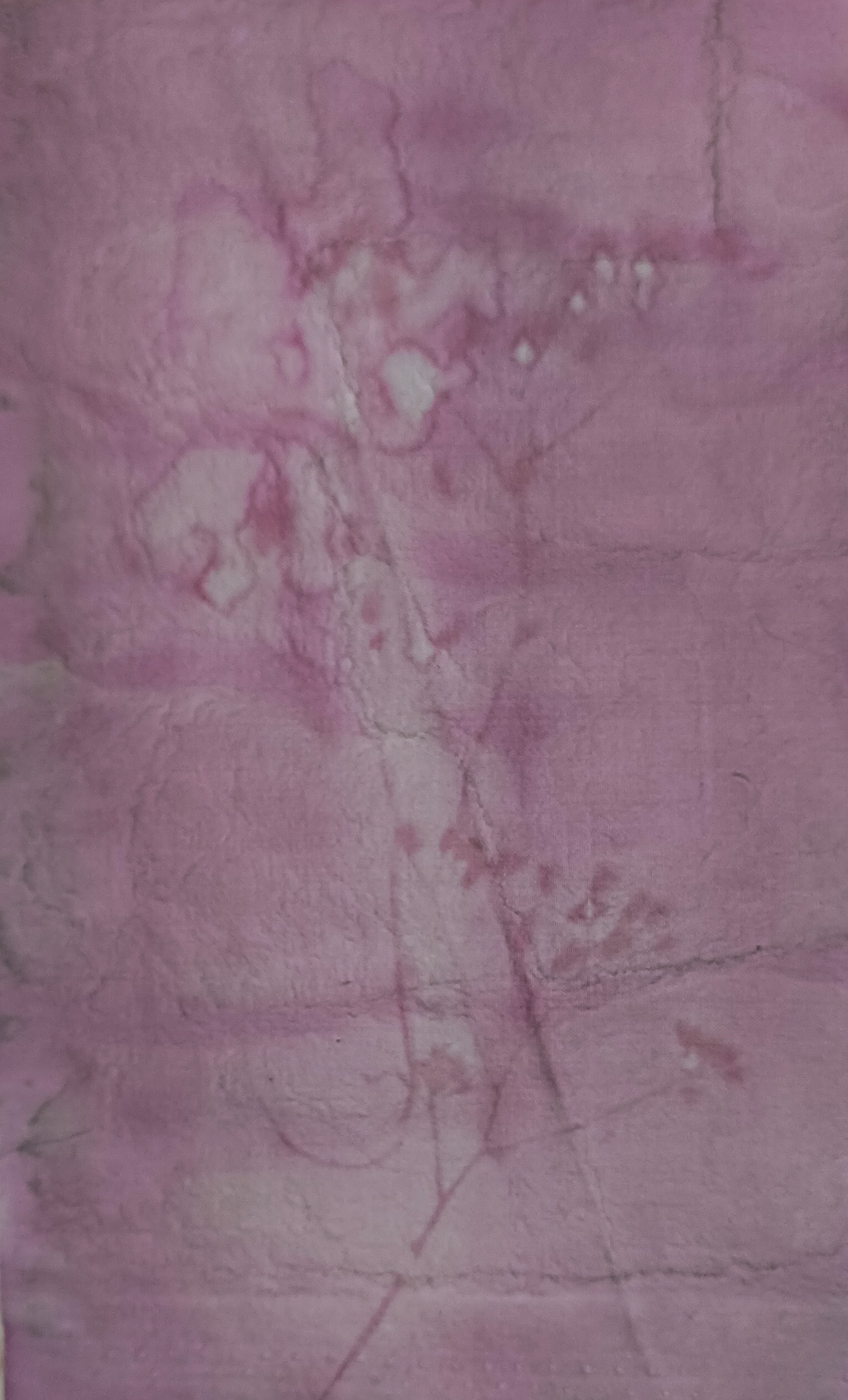
Garment with cyanotype print

